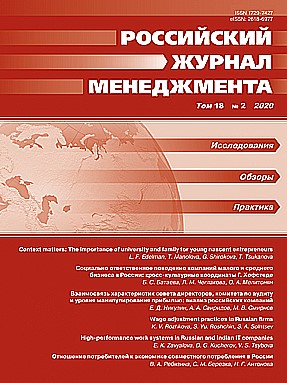High-performance work systems in Russian and Indian IT companies
DOI:
https://doi.org/10.21638/spbu18.2020.205Abstract
High-performance work systems (HPWSs) represent one of the key topics in contemporary strategic HRM. This study aims to examine the HPWSs in the IT sector of two emerging markets, Russia and India. The research based on the survey of 132 companies indicates that there are differences in HRM practices between Russian and Indian IT companies which constitute high-involvement and high-commitment HPWSs. Further, regression analysis reveals that these systems impact the firm performance differently. The findings extend the literature on HPWSs in knowledge-intensive firms in emerging markets.
Keywords:
high-performance work systems, high-performance work practices, performance, IT companies, knowledge-intensive firms
Downloads
References
REFERENCES IN LATIN ALPHABET
Downloads
Published
How to Cite
Issue
Section
License
Articles of the Russian Management Journal are open access distributed under the terms of the License Agreement with Saint Petersburg State University, which permits to the authors unrestricted distribution and self-archiving free of charge.





